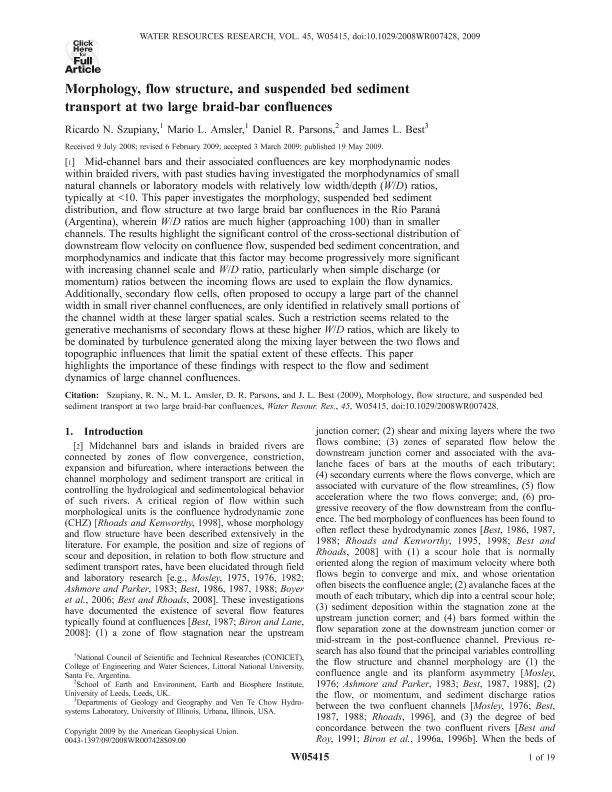Artículo
Morphology, flow structure, and suspended bed sediment transport at two large braid-bar confluences
Fecha de publicación:
05/2009
Editorial:
American Geophysical Union
Revista:
Water Resources Research
ISSN:
0043-1397
Idioma:
Inglés
Tipo de recurso:
Artículo publicado
Clasificación temática:
Resumen
Mid-channel bars and their associated confluences are key morphodynamic nodes within braided rivers, with past studies having investigated the morphodynamics of small natural channels or laboratory models with relatively low width/depth (W/D) ratios, typically at <10. This paper investigates the morphology, suspended bed sediment distribution, and flow structure at two large braid bar confluences in the Río Parana (Argentina), wherein W/D ratios are much higher (approaching 100) than in smaller channels. The results highlight the significant control of the cross-sectional distribution of downstream flow velocity on confluence flow, suspended bed sediment concentration, and morphodynamics and indicate that this factor may become progressively more significant with increasing channel scale and W/D ratio, particularly when simple discharge (or momentum) ratios between the incoming flows are used to explain the flow dynamics. Additionally, secondary flow cells, often proposed to occupy a large part of the channel width in small river channel confluences, are only identified in relatively small portions of the channel width at these larger spatial scales. Such a restriction seems related to the generative mechanisms of secondary flows at these higher W/D ratios, which are likely to be dominated by turbulence generated along the mixing layer between the two flows and topographic influences that limit the spatial extent of these effects. This paper highlights the importance of these findings with respect to the flow and sediment dynamics of large channel confluences.
Archivos asociados
Licencia
Identificadores
Colecciones
Articulos(INALI)
Articulos de INST.NAC.DE LIMNOLOGIA (I)
Articulos de INST.NAC.DE LIMNOLOGIA (I)
Citación
Szupiany, Ricardo Nicolas; Amsler, Mario Luis; Parsons, Daniel R.; Best, James L.; Morphology, flow structure, and suspended bed sediment transport at two large braid-bar confluences; American Geophysical Union; Water Resources Research; 45; 15; 5-2009; 1-19
Compartir
Altmétricas




